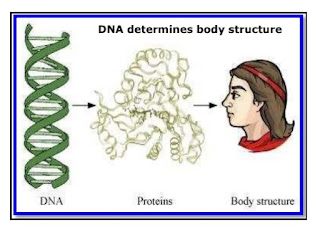NCERT Solutions Class 10 Science Chapter 8 || How do organism reproduce additional questions solution || Class 10 Chapter 8 Additional questions solution || Biology || Science ||
Ques 1: What is the importance of DNA copying in reproduction?
Ans 1: DNA (Deoxyribonucleic acid) is the genetic material found in the chromosomes, present in the nucleus of the cell. The DNA (Deoxyribonucleic acid) is the information site for making proteins and each specific type of protein leads to the specific type of body design.
Thus, it is the DNA molecule that specifies the body design of an individual. Therefore, it can be concluded that it is the DNA that gets transferred from parents to their offsprings and makes them look similar.
Ques 2: Why is variation beneficial to the species but not necessarily for the individual?
Ans 2: Variations are beneficial to the species than individual because s sometimes for a species, the environmental conditions change so drastically that their survival becomes difficult.
For example, if the temperature of water increases suddenly, then most of the bacteria living in that water may die. Only few species that are resistant to heat would be able to survive. However, if these variants were not there, then the entire species of the bacteria would have been destroyed. Thus, these variants help in the survival of the species. However, all the variations are not necessarily beneficial for the individual organisms.
Ques 1: How does binary fission differ from multiple fission?
Ans 1: In binary fission, a single cell divides into two equal halves. Amoeba and Bacteria are the example of binary fission.
In multiple fission, a single cell divides into many daughter cells simultaneously. Amoeba and Plasmodium are the examples of multiple fission.
Ques 3: Can you think of reasons why more complex organisms cannot give rise to new individuals through regeneration?
Ans 3: Simple organisms such as Planaria and Hydra are capable of producing new individuals through the process of regeneration. The process of regeneration involves the formation of new organisms from its any body parts. Simple organisms can utilize this method of reproduction as their entire body is made up of similar kind of cells in which any part of their body can be formed by growth and development.
However, many complex organisms have organ-system level of organisation. All the organ systems of their body work together as an interconnected unit. They can regenerate their lost body parts such as muscles, skin, blood, etc. However, they cannot give rise to new ones through regeneration.
Ques 4: Which of the following is a plant hormone?
(a) Insulin
(b) Thyroxin
(c) Oestrogen
(d) Cytokinin
Ans 4: (d) Cytokinin is a plant hormone.
Ques 5: Why is DNA copying an essential part of the process of reproduction?
Ans 5: DNA (Deoxyribonucleic acid) copying is an essential part of reproduction as it passes genetic information from parents to their offspring. It determines the body design of an individual. The reproducing cells produce a copy of their DNA through some chemical reactions and result in two copies of the DNA. The copying of DNA always takes p place along with the creation of additional cellular structure. This process is then followed by d division of a cell to form two cells.
Ques 1: How is the process of pollination different from fertilization?
Ans 1: Pollination is the process of transfer of pollens grains from anther to stigma. It occurs with the help of certain pollinators such as birds, air, water, or some insects. Fertilization, on the other hand, is the fusion of the male and female gametes. It occurs inside the ovule of the female and leads to the formation of zygote.
Ques 2: What is the role of the seminal vesicles and the prostate gland?
Ans 2: The secretions from seminal vesicles and prostate glands lubricates the sperms and provide a fluid medium for easy transport of the sperms. Their secretion also provides n nutrient in the form of fructose, calcium, and some enzymes.
Ques 3: What are the changes seen in girls at the time of puberty?
Ans 3: Secondary sexual characteristics in girls:
• Increase the breast size and darkening of skin at nipples present at the tips of the breasts.
• Appearance of hairs in the genital area.
• Appearance of hair in other areas of skin like underarms, face, hands, and legs.
• Increase in the size of uterus and ovary.
• Beginning of menstrual cycle.
• More secretion of oil from the skin, which results in the appearance of pimples.
Ques 4: How does the embryo get nourishment inside the mother’s body?
Ans 4: The embryo develops inside the mother’s body for about nine months. Inside the uterus, the outer tissue surrounding the embryo develops finger-like projections called villi. These villi are surrounded by uterine tissue and maternal blood. They provide a large surface area for exchange of oxygen and nutrients. Also, there is a special tissue called placenta, which is embedded in the uterine wall. The embryo receives the oxygen and nutrients from the mother’s blood via the placenta. The waste materials produced by the embryo are also removed through the placenta.
Ques 5: If a woman is using a copper−T, will it help in protecting her from sexually transmitted diseases?
Ans 5: No. Using a copper-T will not provide a protection from from sexually transmitted diseases, as it does not prevent the entry of semen. It only prevents the implantation of the embryo in the uterus.




Comments
Post a Comment